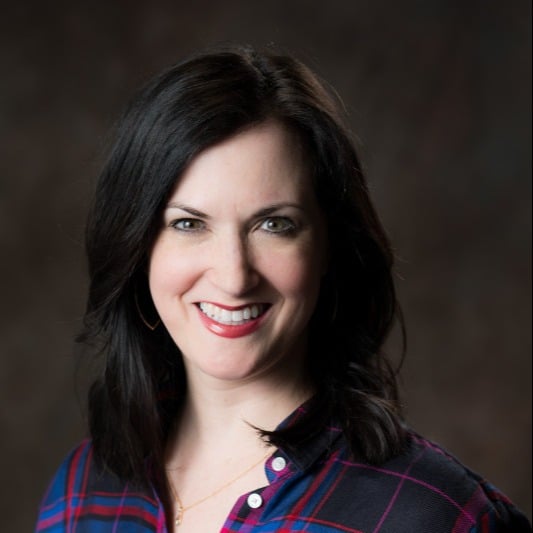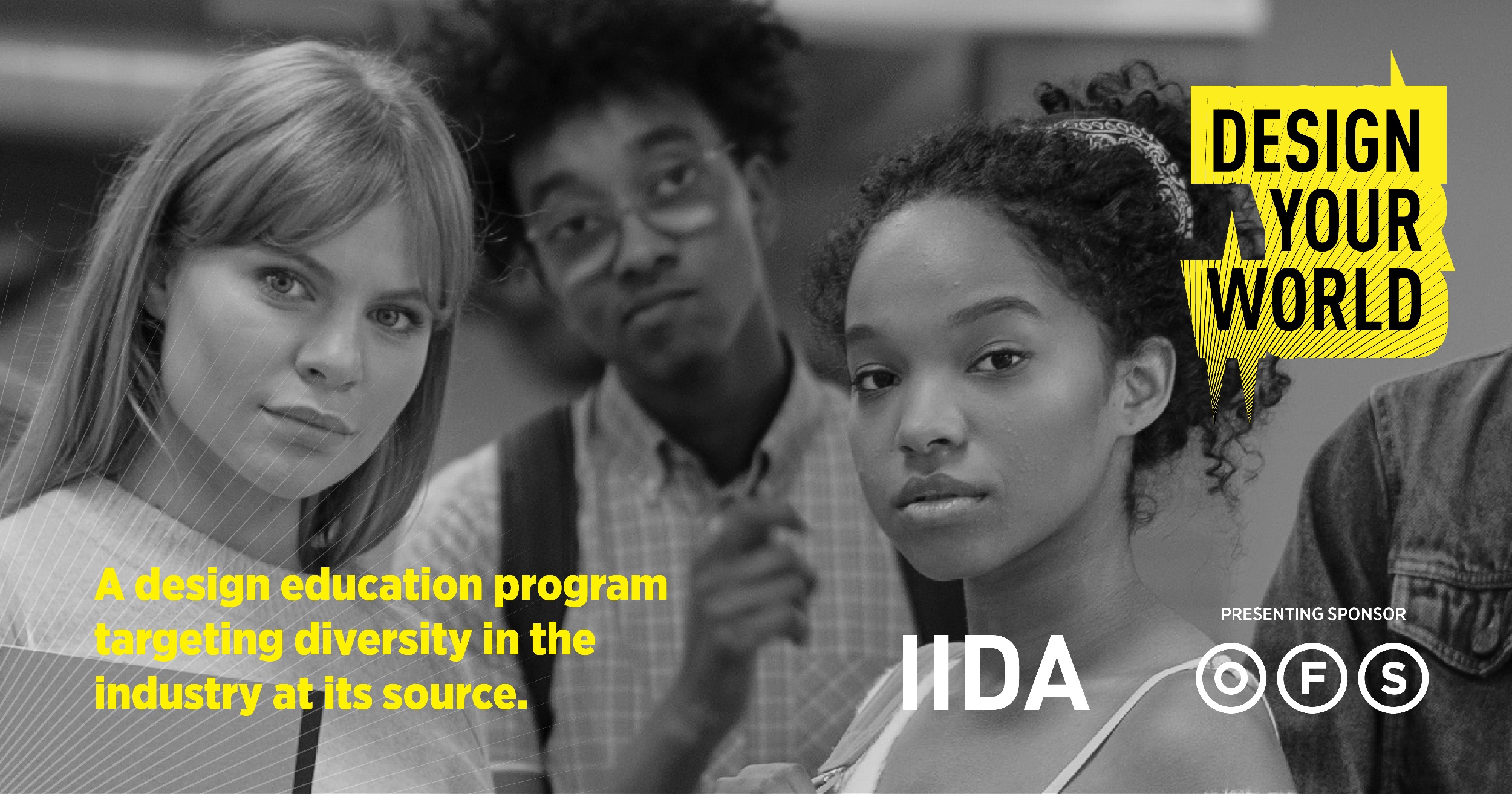Q&A With Roby Isaac
When most specifiers and designers look through a series of samples to find the right look for a project, the inspiration behind a collection or the person who created it probably isn’t top of mind. But, that commercial designer is the spark behind finding exactly the right carpet to make a project come to life.
At Mannington Commercial those designers draw from both professional and personal experiences to create. Roby Isaac, Vice President of Commercial Design, spoke with us about his journey from art classes to internships to the realization he could be part of a team that creates lasting beauty through commercial flooring.
AD:
How did you end up in design, Roby?
RI:
Where do I begin? I wasn't born in Philadelphia, but I grew up there. My parents immigrated from India in 1981.
This may be an odd way to begin a story about design...but when I was a little kid, I spent a lot of time in front of the TV. I think this was because my parents didn’t want me out in the neighborhood because after moving from rural India, everything was unfamiliar to all of us. There were so many unknowns outside that it was safer just to be inside.
During those countless hours of watching TV shows, I would sit and draw. Always. There was a time, at a really young age, when my aunt saw something that I drew and said, "Oh, that's a really good drawing, you should be an artist”. I remember feeling so proud of myself when she told me that. When I reflect on that moment now, it’s amazing to think of how small bits of encouragement can do so much for building self-confidence. It was probably the first time that I thought I could do something with art.
I always took advantage of opportunities in school to do anything creative, whether it was drawing with or for friends, or finding classes that interested me. In high school, I took a video graphics class.
![img094[2]](https://blog.manningtoncommercial.com/hs-fs/hubfs/img094%5B2%5D.jpg?width=1080&name=img094%5B2%5D.jpg)
Roby (center) with his mother, father and brother before immigrating to the Unites States.
In the course, we learned about stop motion, claymation and how to make commercials while learning a little bit about graphic design. One day the teacher made an announcement in class about an opportunity to be an apprentice for an art studio in Center City (downtown Philly) and asked if anyone was interested. I think I was the only one who raised my hand, & I only did it because I was curious. I didn't know what being an apprentice was. It had to do with art so I wanted to know more about it.
The name of the studio, which is actually more of a contemporary art museum, is The Fabric Workshop and Museum (FWM). When I scheduled a time for the apprenticeship interview, they told me they would like to review my portfolio as well.
I was probably a sophomore in high school, and I didn't have a portfolio or know what one should consist of. I took some time and scrambled to put together a few things that showed some of my drawing skills. They were definitely not gallery-worthy & nothing about them spoke to contemporary art (*think cartoon characters!)
The day I went to the Workshop was literally life-changing. It was like no place I’d ever seen. I remember it being so open, bright, and beautiful. I also remember feeling a bit out of place. It was both amazing and intimidating. I ended up getting accepted into the apprentice program, a vision of the Workshop’s founder, Kippy Stroud.
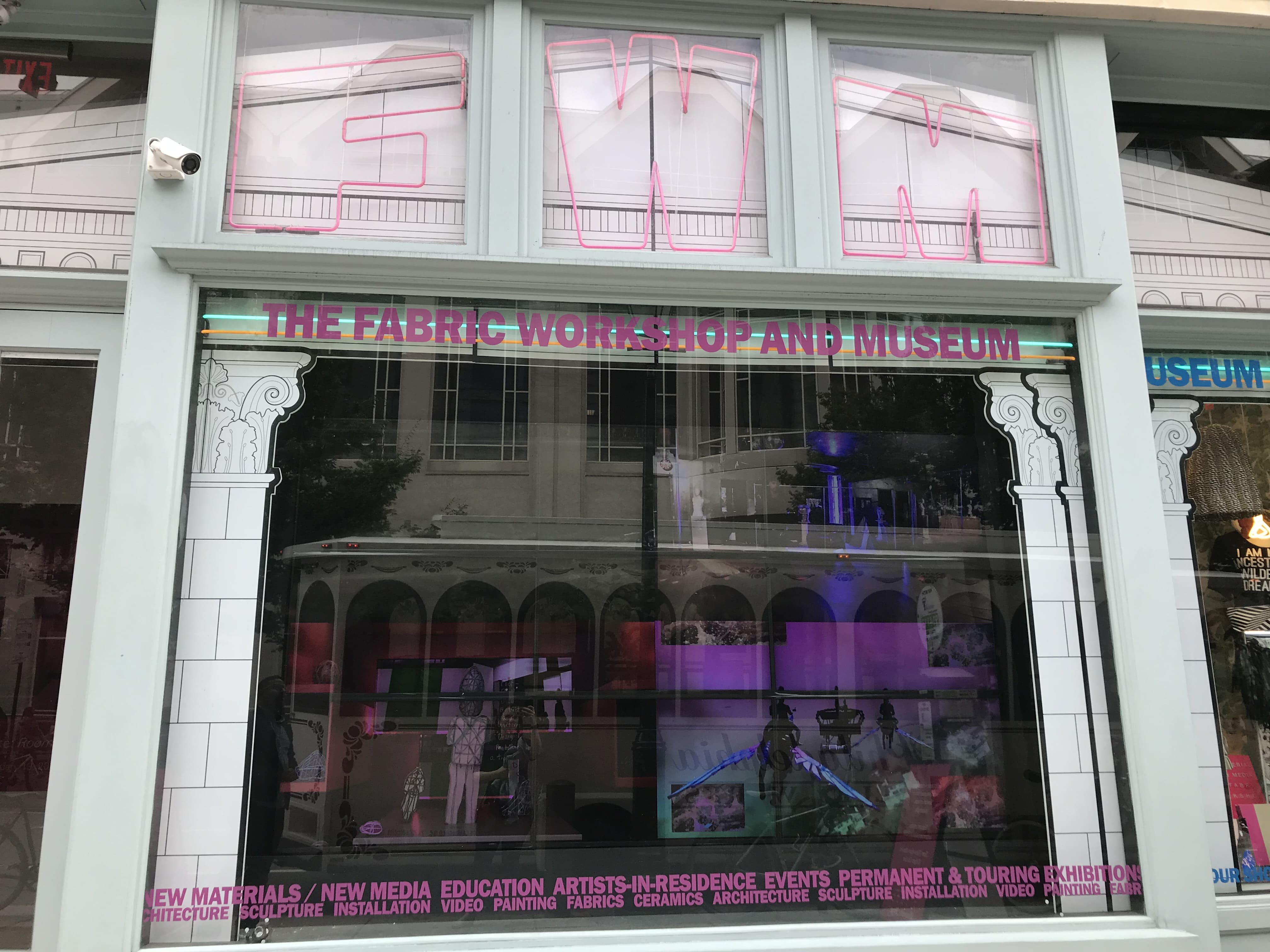
The Fabric Workshop and Museum, Philadelphia PA.
Kippy started The Fabric Workshop in 1977 (incidentally, the same year I was born!) as a place to invite contemporary artists where they could creatively explore new ideas freely, while being introduced to the medium of textile printing.
For example, an artist would work with the Fabric Workshop staff to have their concepts or techniques converted into artwork that would then be printed onto fabric. Sometimes that fabric would become part of the gallery exhibit that the artist would have at the Workshop. Other times they would be sold in the gallery store as limited edition pieces.
My role as an apprentice was learning the skills to assist master printers with the artists’ projects. This included a lot of behind-the-scenes work like making, cleaning and maintaining the screens for the artwork. Apprentices were responsible for playing with pigments and building color recipes in the mixing room. We'd have to do all the math to make these colors right for the printed material.
I never realized, until looking back, that those tasks prepared me for design school, and have even helped me in my career.
AD:
All those little things in your childhood created building blocks that inspired you to even want to consider a career in design. Let’s talk about that transition to what you're doing now from these things in the print shop.
As you were learning about textiles, did you ever think that could lead to designing carpet?
RI:
No, not at all. In fact, I thought I'd do something super traditional in terms of a career path. That had a lot to do with being a child of an immigrant family and knowing they left their home country to come here to have a better life. My friends and I knew our parents wanted to give us a better life. A lot of my friends took more traditional paths in medicine or engineering or law or something that would be deemed a "good professional career path."
The apprenticeship program was only supposed to last three months, but a year after that was done they contacted me and gave me a scholarship to be a studio assistant.
![Fabric Workshop[1]](https://blog.manningtoncommercial.com/hs-fs/hubfs/Fabric%20Workshop%5B1%5D.jpg?width=1108&name=Fabric%20Workshop%5B1%5D.jpg)
Roby as an intern at The Fabric Workshop
I was starting college as a biology major on a traditional path in medicine to be a vet. I liked animals, and I didn’t want to be a doctor and be in a hospital all the time, but I could still fulfill what my parents wanted or what I thought my parents wanted.
I was okay with the coursework, but I just didn't enjoy being in a lab setting. I remember sitting in a chemistry class and thinking, "Gosh, I don't think I could be in a clinical environment for the rest of my life."
I was still a studio assistant at the Workshop during my off days in college. One day, and I remember this clearly, I was venting to one of the master printers; she suggested that I check out the textile program at a school down the road.
I was like, "Oh my gosh. Yeah, absolutely." Somebody’s got to design all that. The school was literally 15 minutes from my parents' house, and I didn't know it existed, that a textile program existed.
This lead to me touring Philadelphia College of Textiles, and I was blown away. It was a stark contrast to that clinical setting, and I knew that’s where I needed to be. I immediately started the transfer process of moving from Temple to Philadelphia College of Textiles. At the time, I didn't really know all the careers that could come from getting a textile-based degree.
![img084[1]](https://blog.manningtoncommercial.com/hs-fs/hubfs/img084%5B1%5D.jpg?width=1080&name=img084%5B1%5D.jpg)
Roby with his mother in Philadelphia
I started out as a textile technology major where you learn more or less engineering principles that would help you get into a manufacturing setting. During foundational courses, all textile students learned about yarn and the chemistry of dyeing fibers. By spending time with design students in these classes, I realized I was more interested in the creative side than the engineering side. At that point, I had to talk to my parents.
My parents immigrated from India to build a life here. And I was about to tell them that I was going from what they would consider a stable engineering job to something that's more like an artist job.
I went to my dad who was very supportive and said, "This is a path that you're going to choose. This is your life, and you have to be happy." It was because of this, his blessing, that
I decided to take the leap into design. That’s the encouragement and support that creative people need, especially to feel like they're going down the right path.
I specialized in weaving thinking that I would go into home furnishings, so I did an internship with a mill that made commercial upholstery. I learned a lot there about the manufacturing process, about understanding how a design team works, and the relationship between the design director and staff. I learned about the deliverables of what needed to be done on a day-to-day basis to get to the end goal.
It was interesting to see two different approaches to textile design: one was the upholstery mill where products were made with the goal of creating sales; while the other was the Fabric Workshop whose approach was more about creative expression.
The internship focused on developing products for a commercial market for a large audience, whereas the Workshop was making things that were uniquely individual. Both required personality and character to be part of the final product. The internship illustrated that things could be mass produced and still be aesthetically pleasing.
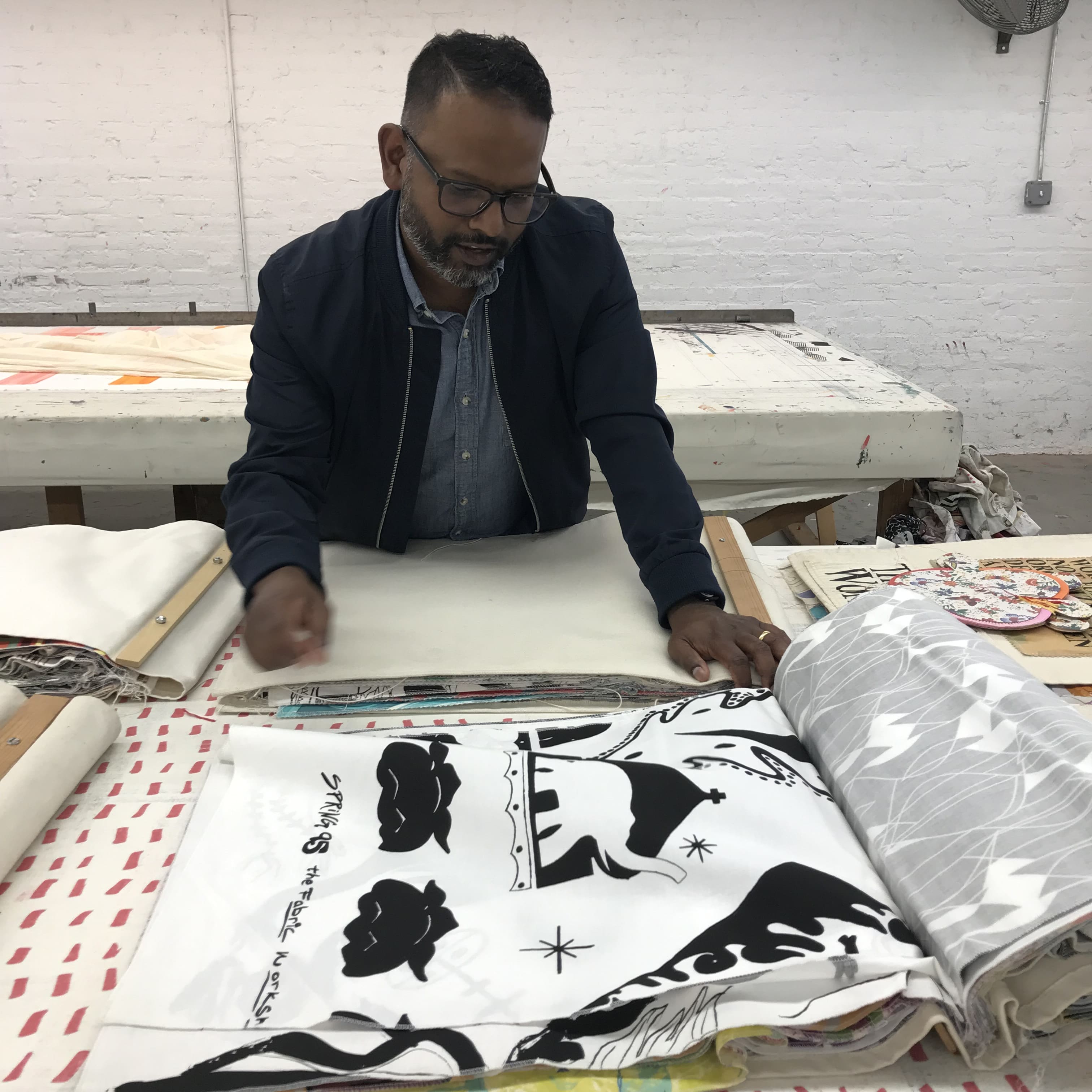
Roby at The Fabric Workshop looking at his print from 1995 when he revisited in 2019
AD:
In your current position, you marry those two things really well. Many people don't consider art as a career path because they don't understand how fine art translates to that larger scale, but there is a process and an industry around it.
Design is integrated into our world, into everything we touch and everything that we do, and in the built environment that we live and work in.
How did you learn to take your skills as a fine artist and translate them to be mass produced?
RI:
I appreciate you saying that. It took me a while to embrace that because in school, we were taught to build a portfolio of work that was good enough to land a job. The hope was that the potential employer could see that understood the design basics; the foundational stuff. But you should also be able to show beautiful things that would make them want you on their team.
When I got into the workforce at my first job was as a designer for a carpet company. And that was a dramatic change from being in school. In studio at school, there was always bunch of stuff going on; the energy was different. Studio was a little messy, but everybody understood that we needed to be messy. And whether it was loud with activity or quiet because everyone was deep into work, you could always feel the creative energy. I just assumed that now, sitting in an office instead of a studio at school, that I had to act “professional”… but nobody ever told me what that meant or how I was supposed to act, or be.
The corporate office where everyone had their own desks and spaces felt a bit more tidy and organized. I thought that’s the way I needed to be also. So my mindset shifted. I felt like I needed to be tidy and organized too. Instead of wearing paint splattered sweats to a studio, now I had to wear a shirt and slacks.. At some point started to become draining because even though I was doing okay work, and probably fulfilling all the requests, I don’t think I was feeling fulfilled. It didn't fill me creatively.
I realized I had to incorporate myself into my work it or I’d start losing myself gradually. And that’s what I started doing. I stated being more open with my ideas and more expressive. Fortunately, the people I was working for were open to me (and other designers on the team) showing our personalities. As I look back, I think they probably wanted that to come out of us but never asked. This experience as a staff designer made me realize that being bold and open isn’t just okay, it’s necessary; and that if I ever became a design manager I’d be sure to encourage my designers to fully embrace and share their creative selves.
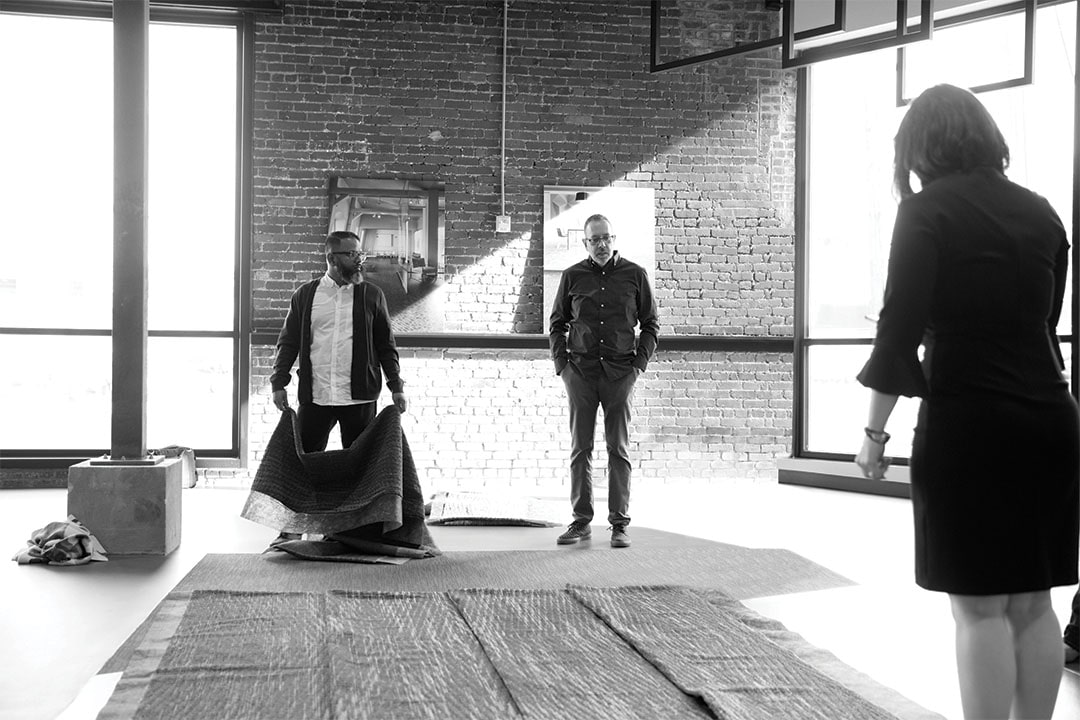
Roby with Artist, Gabriel Dawe for the Moire Collection
When I became a director, I had to start interviewing and hiring my own design staff. I had a set of these standard interview questions about, strengths & weaknesses. All the boring stuff. Then I’d ask them to talk to me about experiences in design school. I really wanted to understand why they chose design. What drove them to study this field? I wanted to understand the mind of these designers. Those were always really good conversations.
When I asked specifically about their studio experiences, they would light up and you could feel the creative passion behind what they were saying. People that were shy and polite with the first few questions would begin opening up and share more about themselves. They showed this enthusiasm that meant so much more to me than how they answered all the other questions.
It started making me think in professional environments, we almost cultivate this idea that, when you leave school, you need to shed your old ways and become a new person. And sometimes that new person is someone you never were and somebody you wouldn’t recognize. That didn’t make sense to me. Especially with design students. Why would we hire all of these crazy talented people and then ask them to suppress why we hired them in the the first place?
Instead, my approach was to bring them on staff and help them get their creativity out in the best ways. Find ways to embrace and cultivate all that creative energy. And then we’d just figure out how to manage expectations from the business, the market, manufacturing and everyone else accordingly.
I trace that back to the Fabric Workshop too, because the idea of self-expression was critical there. The artists came in and said, "This is what I want to do. This is who I am. This is the message that I want to share." There's so much power in that. As I think about where I am now in Mannington Commercial, part of the goal is to get our customers and people that we want to be customers, to understand the identity of Mannington Design Studio. We have to be expressive, and we have to come out with powerful design stories and statements. Because otherwise, it's suppressing our creative voice.
AD:
Do you have any advice for someone who is interested in art and design but doesn't know where it will lead? As a parent, how would you suggest cultivating that creativity with kids or helping a child follow that interest?
RI:
For anyone who’s exploring careers, at least be aware of design opportunities. As a parent, I’ve been trying to expose my kids to things that they might not know about. Things as simple as taking them to a museum regularly and sometimes to things that I’ve never seen so we can learn together.
Or I like to buy art books and just leave them everywhere so that I can pick it up when the kids are around and just talk about something. I don't try to do this big old lecture; I just give them tidbits so the creative conversation is natural. As kids we have this limitless amount of creativity. We want to be explorers, and we want to build things and make things and just try things. But we're told to do things the way adults would do them. I want my kids to be comfortable that things can be done differently, and it's okay.
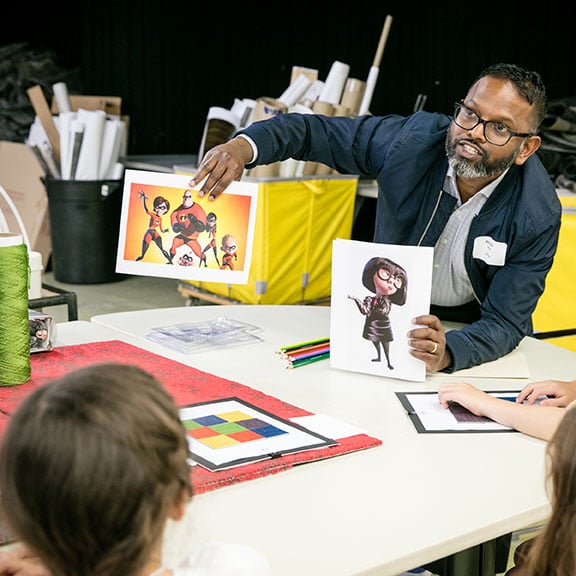
Roby leading a children's creative workshop at Mannington in 2019.
Showing children things that are unique and different and maybe outside of their comfort zone can inspire a conversation. They don’t need to always follow up by building something or painting or whatever. It’s just about opening their minds. They need to understand that there are a lot of differences in the world, even in ways people creatively approach things… and that's okay.
AD:
That’s why we're excited to partner with Design Your World. It speaks to what we’re trying to do for young adults in high school and for the design community. By exposing them to those ideas they can have that initial thought that might lead them down a similar path to yours.
Related: Elevating Equity in Design
RI:
I think that's the critical piece – the exposure to a world that you might not know otherwise. When I walked into the studio for the Fabric Workshop for the first time, it blew me away. At that time, it was just amazing. We need to make opportunities like this visible for people who might not have access; otherwise, it's never really available.
Design Your World is a design education program targeting diversity in the industry at its source. The six-week summer practicum will take place in Chicago. The Goal of the program it to expose and equip a diverse community of BIPOC students and emerging professionals to design.
Click the graphic to learn more.
